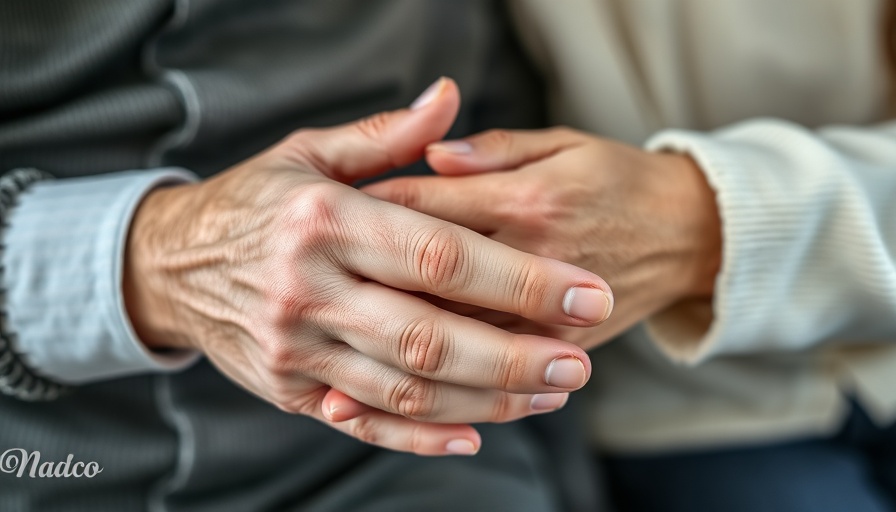
Embracing Remote Monitoring: A Step Toward Independence
As technology advances, the health care framework for elderly individuals, especially those with neurological conditions, continues to transform. A recent study from the University of Eastern Finland Business School reveals that elderly patients are increasingly receptive to in-home remote monitoring (RM) technologies, which utilize digital health solutions to keep health metrics in check while allowing them to age in the comfort of their own homes. This acceptance emerges as a profound option, empowering patients while easing the burden on traditional health care systems.
Understanding Remote Monitoring
Remote monitoring refers to technologies such as wearable devices and mobile health applications that collect essential health data like activity levels, sleep patterns, and heart rate. Such tools not only provide patients with the information they need to understand their health conditions better but also facilitate seamless communication with health care professionals. By adopting these technologies, elderly individuals can actively participate in their own health management, fostering a sense of agency.
Key Findings from the Study
The study involved 30 patients diagnosed with idiopathic normal pressure hydrocephalus (iNPH) at the neurosurgery unit of Kuopio University Hospital. It concluded that living arrangements significantly influenced the acceptance of remote monitoring. Patients who lived with family caregivers were more likely to embrace RM compared to those living alone. Interestingly, the educational background also played a significant role—patients with higher education levels exhibited a more positive attitude towards adopting such technologies. Age and gender, however, did not significantly influence this acceptance. Melika Azim Zadegan, a doctoral researcher involved in the study, highlighted the necessity of tailored educational initiatives for elderly patients with various educational backgrounds, helping to ease their transition to technology-driven health solutions.
Connecting Health Innovation to Community Well-Being
The shift to remote monitoring aligns seamlessly with the broader definition of health and wellness. Understanding and embracing technology can significantly improve individual and community health outcomes. Elderly patients, often overlooked in technological advancements, are now at the forefront of this wearable revolution. Furthermore, community health and wellness centers can benefit enormously by integrating RM programs tailored to their demographic's unique needs—ensuring an elder-friendly approach within San Antonio’s vibrant health landscape.
The Role of Caregivers in Technology Acceptance
The study also suggested that caregivers play a pivotal role in the successful adoption of remote monitoring technologies. By providing support and training, caregivers can guide elderly patients, making them more comfortable with using health technologies. In light of that, health policies should incorporate caregiver education alongside patient training, empowering caregivers to better support their loved ones. This collaboration can create a robust system where both patients and caregivers thrive—increasing the likelihood of optimal health and wellness for all involved.
Looking Ahead: Trends and Opportunities in Remote Monitoring
As acceptance of remote monitoring grows, the next crucial step lies in the implementation of more personalized technology solutions. Companies investing in the development of health care technologies must collaborate with both patients and caregivers to forge innovative solutions. Designing RM systems that consider the peculiarities of elderly needs not only enhances user experience but also paves the way for future advancements that can contribute positively to community health systems.
Conclusion: The Future of Health and Wellness for Seniors
The willingness of elderly neurological patients to adopt remote monitoring signifies a major shift towards a more inclusive and empowered model of health care. As society increasingly prioritizes independence and quality of life for seniors, the integration of health technology becomes more relevant than ever. Embracing these innovations is an essential step towards constructing a future where all individuals can lead healthier, more empowered lives as they age.
As we continue to explore the benefits of remote monitoring, it’s crucial to consider how technology can help facilitate easier, brighter futures for our elderly populations. For those looking to enhance their knowledge base about health and wellness in the context of emerging technologies, stay tuned for our upcoming news and updates! Your journey to understanding the intersection of technology and health starts here.
 Add Row
Add Row  Add
Add 




 Add Row
Add Row  Add
Add 


Write A Comment